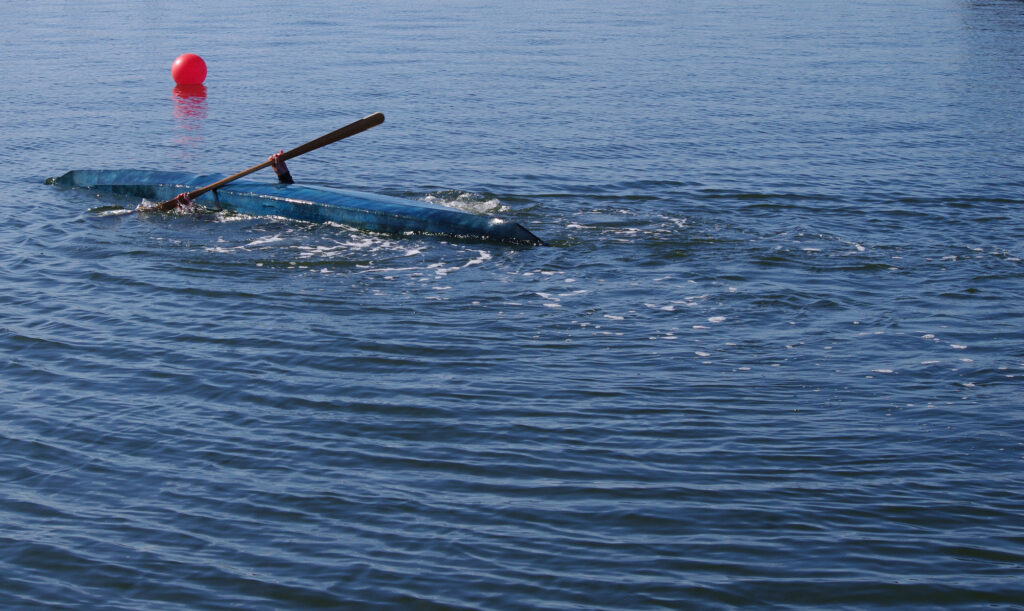Epic neverending rant warning. You should always take what you read on the Internetz by face value and never make your own opinion.
What makes for a good roller? Is it only the technique? How do you practice when you aren’t getting anywhere? I will try to jot down some, probably inconclusive, points here and see where this goes.
The paddler
Well, I think it is obvious you need to have the strength and flexibility for the type of roll you want to achieve. More on that later, but for the rolls using a paddle, especially the Standard Greenland Roll, you do not have to be strong if you have good technique but it may help when learning that particular roll. It is probably the basic idea of the SGR, that you can do it however exhausted or out of breath you are.
The more advanced the roll, the more flexible and stong you need to be to learn it safely. That means you have to be flexible and stay so during your whole rolling career, but if you do the roll correctly, not very strong. Do not skip warm up!
After seeing and teaching many kayak rollers I get the general picture that learning forward finishing rolls with a paddle can take a toll on your shoulders. This is something I don’t experience with my own forward finishing rolls and it is not because of my strength but because you have to primarily use your torso more than your arms. I have one bad shoulder after a skiing accident long ago but that side almost comes easier doing forward finishing rolls. I am guessing it’s because I had to learn every roll on that side with less power, hence I couldn’t skip learning the technique properly.
Holding the paddle tricks you into thinking that it is your only tool, but boy does that tool have leverage on your shoulders!
Maybe you should try rolling with a huge float tied to your chest instead of using the paddle? Maybe let your arms follow your torso, like a happy flailing inflatable air dancer?
For practicing a few times in real life situations, just go ahead and do some rolling! I call it a proper rolling session if you do a hundred of them or so. You will build up to that number gradually, depending on your skills, stamina, water temperature etc. Also when practiced you might benefit from just a few certain rolls to revive your muscle memory and finish off your (upright) paddling session.
The rolling kayak
It helps to have an easy-to-roll kayak and every piece of equipment that makes rolling more enjoyable and fun when practicing new rolls. If you don’t, it distracts your focus, takes more stamina, persistence and toughness and you would have made longer and more effective rolling sessions anyway. Equipment can be a nose clip, underwater goggles, a neoprene hood, headband or earplugs to not get hard splashes into your ears, a Tuilik paddle jacket, a big float, a non-feathered paddle, among some. Paddling inside your cockpit’s sides and over your thights can hugely improve your rolling.
You don’t need all the equipment, it just makes practice easier.
So what makes the kayak easy to roll?
Ahhh, that depends! Low volume, a low back deck and a round fore deck. A seat which allows you to lay back on the kayak without lifting your butt (which raises the center of gravity, no offense :). It might be a good idea to skip the back rest, release your foot rests to be seated further forwards and just keep yourself in the kayak with your knees. That may involve experimenting with extra foam across your thighs and such. If you can lay back on your kayak without lifting your butt, you probably have a good kayak for layback rolls. For forward finishing rolls there is more to take into consideration.
Side rant: a kayak has to be balanced regarding volume fore- and aft of the paddler, whether you’re rolling or paddling. A more rounded and narrow front can be beneficial for forward finishing rolls. However, for the aft finishing rolls, you may want a slightly wider, flatter kayak. This brings us to the ideal Goldilock kayak… for you…is… I don’t know! I would have to see you roll, learn your milestones and goals and build it for you. You can build it yourself of course, but prepare to go on a long journey before you tune into all nuances. You may have to build several kayaks. That is of course a good thing!
If you bounce around in your kayak when trying to roll, it’s not good. If you sit too tight to not move at all, it’s probably also not good, but what is really too tight? For you Keyhole Cockpit paddlers, you will hopefully want to explore the benefits of “that crazy small” Ocean Cockpit and a tight thigh brace, Masik. Of course those small cockpits are only for lunatics with a deathwish as everyone knows…
Oh, and that last remark was sarcasm 🙂 More on cockpits later.
Getting stuck in my kayak
It is easy to think you can “get stuck” in your kayak. You will not. Not by sitting tight in it. What gets you stuck is possibly equipment failure or your panic response from your Amygdala (fight or flight), which tenses up your legs and abdomen. If you stay relaxed, you will get out. You got in to paddle it right? Were you panicking at that point? Well maybe you were but it’s a lot easier to get out, especially underwater. To stay relaxed, you need to practice smart and get comfortable with the water, your kayak and your own ability. And then practice some more.
Practice getting unstuck! I have been in situations where a large keyhole cockpit with plenty of room to get out, didn’t allow me to get out because of my kayak tumbling sideways in whitewater “keepers”. Or bouncing on rocks, “surfing” ocean whitewater all the way up to the beach. This was before my rolling was 99,99%, way before.
The size of the keyhole cockpit didn’t help and my panic response kept me inside it. Sometimes all you get is a mouthful of sand or the paddle gets stuck or struck out of your hands. Sometimes you get your face smashed (yes I have) or the paddle catches beneath rocks, which your shoulders don’t like. However, I wasn’t what you call “stuck”.
In Greenland rolling, none of that happens. With more practice you “get stuck” less either way. To roll advanced rolls, you need a tight fit.
The 0,01% failure rate
In a rolling kayak it’s swimming time when you’re not seated properly and slide out, or the spray deck came loose in your low volume kayak and waves quickly fill it. I have heard and read so many times “you’re always between swims”. For Greenland rolling kayaks, It takes body or equipment failure too. My last count must be up to 10K rolls without swimming and I am definitely not alone in that count. Then again, when practicing Greenland rolls, you might do a hundred of them in one session. However, I will report when I swim next time, promise! I love the way Strömstararna, a local Whitewater club present their “Swimstars”.
Building or buying a rolling kayak
Potato-tomato. Whatever makes you tick. I like building and I have also learnt to like the re-building of other people’s, more or less roll-able, kayaks. When their skills advance, they usually need something with better defined abilities to advance even further. Most people don’t suddenly have time, place and the skills needed. It takes a few, if not many, builds to make a really good rolling kayak. My #8 was really good and fun to paddle, the #9 even more so.
The ones before that had a fairly steady progression but it’s not until I unlocked certain features aquadynamically for handling and paddling that I can call myself a kayak builder of any sorts.
I also think you need the proficiency in advanced rolling to appreciate the nuances and thus be able to design them. You also need the empathy and understanding of another person’s needs and style (sometimes without agreeing) to really be able to make a kayak for someone else. Your favorite is not automatically someone else’s favorite!
So what about “you should be able to roll any kayak”?
Yeah, you should. If you can’t, what other rescue do you need to practice? The question is, will you ever be able to learn advanced rolling in a hard-to-roll kayak? It probably takes a strong, flexible body to “overcome” the kayak. So, if you’re willing to put in the practice hours, go for it!
It may feel like training for the Tour De France on your grandma’s old, rusty bike and come race day, you switch to the latest factory prototype. Is that smart? Maybe someone has tried, I dunno. Never heard of it though.
A word of caution: it is very easy and comes natural to the body to use “muscle memory”. So if you fail a lot of times, your body will remember the failures, the pain or whatever you’re experiencing, and not do what the brain tells it to correct. You will possibly have no notion of why you fail, which might impact your positivity slightly, or a lot. Or your equipment suddenly starts flying around you when you fail, if you’re into that 🙂
My strategy is to only fail a few times, then go back to the point where I succeed and practise that instead, until I feel comfortable with it. I always think of rolling as non-binary. (Wherever have we heard that before…) Always trying to invent intermediate steps for myself, so I don’t have to come up from a hundred times failure to one success, but only perform some failures and subsequently succed with the intermediate steps, until I get it. I hope this makes sense for you too.
If you implement that and then have someone coach you or record your successes/failures to watch later, you will probably progress faster. I have found myself stable in certain rolls over the summer, where after a winter I forgot how to do them, at least on one side. More often than not it’s due to no training, non-existent or bad stretching, a sore muscle or similair. And then the muscle memory failing you.
I hope this whole rant might give you some inspiration. Been trying to keep it non-specific about what rolls etc. On a good day I can perform most rolls in the Greenland Roll Scoring Sheet, but not all. Where there’s still room for improvement, there’s still work to be done.
This blog, for example, is mostly my English practice place where I can uninterruptedly share my wicked thoughts. No AI or word processor has come near this blog’s text. All faults are mine. Hope you like my SwEnglish. Now go and play!


